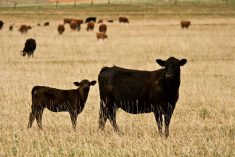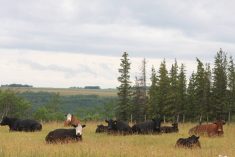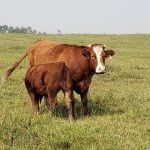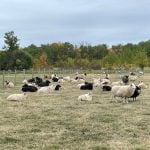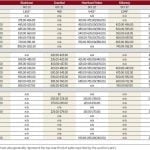Compared to last week, western Canadian feeder cattle markets traded $4-$6 higher. Yearlings led the charge higher with quality packages selling $5 to as much as $8 above week-ago levels.
The return of seasonal temperatures provided a shot of adrenaline for the feeder market. There are quite a few operations carrying minimal numbers because of the poor pen conditions. This past week, feedlot operators that were on the sidelines earlier in April stepped forward more aggressively. Pent-up demand can cause a market to surge and order buyers in the main feedlot regions were overwhelmed with calls. Upside limits were lifted as the market strengthened and finally, the “just get ’em” command surfaced to secure ownership. U.S. and Canadian feedlot operators are realizing that feeder cattle supplies are tighter than earlier anticipated.
Read Also

U.S. grains: Soy futures post biggest monthly gain in nearly five years on China trade optimism
U.S. soybean futures climbed to a 15-month high and posted their biggest monthly gain in nearly five years on Friday following a rally fueled by the prospect of revived exports to China.
Larger-frame Charolais-cross steers weighing just over 900 lbs. sold for $165 in central Alberta; medium- to larger-frame Simmental-blended steers with medium to heavier flesh averaging 855 lbs. were quoted at $176 landed in southern Alberta. There was a wide price range on heifers with quality packages trading a small discount to steers. Southeast of Edmonton, a group of larger-frame medium-flesh Simmental heifers averaging 805 lbs. were quoted at $173.
Grassers and calves that could be stretched out for the November and December fed cattle market were solidly bid. In central Alberta, black steers weighing 555 lbs. sold for $230 while Simmental-blended steers weighing 700 lbs. touched the magical $200. Prices were relatively flat across the Prairies with U.S. demand noted in Manitoba and eastern Saskatchewan. U.S. feeder markets were also $4-$6 higher, enhancing export demand.
Alberta packers were buying fed cattle in the range of $264-$265 on a dressed basis, up $4-$5 from last week. However, Lethbridge-area feedlots were buying feed barley in the range of $255-$257 per tonne delivered.
— Jerry Klassen manages the Canadian office of Swiss-based grain trader GAP SA Grains and Produits Ltd. and is president and founder of Resilient Capital, specializing in proprietary commodity futures trading and market analysis. Jerry consults with feedlots on risk management and writes a weekly cattle market commentary. He can be reached at 204-504-8339.






